
Introduction
Intel has recently launched a very interesting Core i5 series desktop processor, a CPU that has received a lot of attention because it offers a lot of value. It is backed by Intel’s 12th Generation CPU architecture using all Performance Cores (P-Cores) at an appealing price. Therefore, we bought one in retail. We did this so we could give the new Intel Core i5-12400 a comprehensive review. By comprehensive we mean that we are comparing it with nothing less than three competitive CPUs from AMD in synthetic benchmarks and gaming at 1080p, 1440p, and 4K.
Today we have a direct 6 core/12 thread competitive lineup from AMD to throw at the Intel Core i5-12400 12th Gen Alder Lake CPU and see where it sticks. The Intel Core i5-12400 is a 6 core/12 thread CPU and so we are going to throw three AMD 6 core/12 thread CPUs at it for direct comparison. This is an Intel Core i5-12400 versus AMD Ryzen 5 5600G versus AMD Ryzen 5 5600X versus AMD Ryzen 5 3600X CPU Performance Comparison Review!
If you want the lo-down on the Intel 12th Gen CPU architecture check out our Intel Core i5-12600K DDR4 Alder Lake CPU Review where we detail what makes this architecture new and what P-Cores and E-Cores are. You can follow that review up with our Intel Core i5-12600K Alder Lake DDR4 vs DDR5 Performance Review. You can also check out our Intel Core i7-12700K vs AMD Ryzen 7 5800X Performance review. Finally, you can also see how the high-end performs with our Intel Core i9-12900K vs AMD Ryzen 9 5900X Performance Review.
As a quick refresher, the 12th Gen Intel Core Processors are based on a hybrid architecture with Performance Cores (P-Core) and Efficiency Cores (E-Core) components. The P-Cores support hyperthreading but the E-Cores do not. It is the combination of these cores, plus Cache differences, and frequencies that make up the Intel SKUs for these CPUs. These new CPUs can also support new DDR5 memory, but also support DDR4. It depends on the motherboard, and with the new Intel Z690 chipset, PCI-Express 5.0 is supported.
Intel Core i5-12400 Specs
The Intel Core i5-12400 has a recommended customer price of $192-$199. For comparison, the Intel Core i5-12600K has an RCP pricing of $289, separating them by $90-$100. You will notice the 12400 lacks a “K” at the end, this means the CPU is not unlocked, it does not have an unlocked multiplier for overclocking. If you wish to overclock, you will only be able to do so by the BCLK frequency on the motherboard, so your overclocking adventures will be limited. This CPU is not intended for overclocking.
There is an “F” variant of this CPU, the Core i5-12400F. This indicates the model without the integrated graphics onboard. The 12400 (regular) has integrated graphics, but the “F” model does not. The 12400F version does sell for slightly cheaper, at a recommended customer price of $167-$174. Therefore, if you do not need integrated graphics, you can save yourself a little more money and get a better value with this CPU and just get it without the IGP. Nothing else will be different about it. The version we are reviewing today is the 12400 with the IGP on board.
| Specifications | Intel Core i5-12400 | Intel Core i5-12600K | Intel Core i7-12700K | Intel Core i9-12900K |
|---|---|---|---|---|
| Architecture/Process Node | 12th Gen/Intel 7 | 12th Gen/Intel 7 | 12th Gen/Intel 7 | 12th Gen/Intel 7 |
| Cores/Threads | 6 (6P+0E)/12 | 10 (6P+4E)/16 | 12 (8P+4E)/20 | 16 (8P+8E)/24 |
| L2/L3 Cache | 7.5MB/18MB | 9.5MB/20MB | 12MB/25MB | 14MB/30MB |
| Intel Turbo Boost Max 3.0 | N/A | N/A | 5GHz | 5.2GHz |
| P-Core Max Turbo | 4.4GHz | 4.9GHz | 4.9GHz | 5.1GHz |
| E-Core Max Turbo | N/A | 3.6GHz | 3.8GHz | 3.9GHz |
| Base Power/Max Turbo Power | 65W/117W | 125W/150W | 125W/190W | 125W/241W |
| RCP Pricing USD 1K | $192-$199 | $289 | $409 | $589 |
6 Performance Cores
What makes the Intel Core i5-12400 a very interesting CPU is that it is based on the new Alder Lake 12th Generation Intel Core architecture Alder Lake-S 601 SSPEC SRL5Y CPU, but it only uses Performance Cores (P-Cores) with no Efficiency Cores (E-Cores) at all. This breaks from the hybrid design nature of the 12600K, 12700K, and 12900K with both P and E Cores, and instead uses only P Cores with not a hint of an E Core on board.
That means the Intel Core i5-12400 follows the traditional non-hybrid design of CPU architecture. However, because it is still based on the newer 12th Generation architecture, the P Cores have the same IPC and architectural improvements found in all other Alder Lake CPUs.
The fact that this is not a hybrid design also means it doesn’t have to worry about any problems or issues with Windows schedular in software directing threads to performance or efficiency cores. In fact, it does not have the Intel Thread Director hardware on board. It works in a very traditional sense and therefore avoids those software schedular issues that have plagued the hybrid design in early iterations. This means it should perform the same in Windows 10 and Windows 11.
Speeds and Feeds
The Intel Core i5-12400 is a 6 Core CPU, and because the Performance Cores support Hyperthreading it is a 12 thread CPU, so this is a 6 Core/12 Thread CPU in the traditional sense. It has a max turbo frequency of 4.4GHz and a base frequency of 2.5GHz. Therefore, on all cores, it should hit close to 4.4GHz all things being equal, but even on a single thread it will boost only up to 4.4GHz.
It does not support Intel Turbo Boost Max Technology 3.0, which is for the 12700K and 12900K only. It only has traditional Intel Turbo Boost 2.0 ability. It has 7.5MB of L2 Cache and 18MB of L3 or Intel Smart Cache. The base power is 65W and the maximum turbo power is 117W.
IGP
The Intel Core i5-12400 version does have integrated graphics (IGP) using Intel’s UHD Graphics 730. This is not the newer and better Intel UHD Graphics 770 found in the 12600K, 12700K, and 12900K. The Intel UHD Graphics 730 is actually the previous generation of graphics, and not as new or good as the Alder Lake IGP.
Intel UHD Graphics 730 is considered Intel’s Generation 12.1 architecture that was introduced on Rocket Lake, or 11th Generation CPUs, also called Rocket Lake GT1. This is a previous generation IGP. The newer Alder Lake Intel UHD 770 is based on Intel’s Generation 12.2 architecture and introduced on the 12600K, 12700K, and 12900K. Therefore, the IGP on the 12400 is a step backward from the higher-end Alder Lake CPUs. If you are after better IGP performance you will want at least the 12600K.
Full Support
The Intel Core i5-12400 is an LGA1700 CPU and does require an LGA1700 motherboard and chipset. It works just fine on the new Z690 chipset. It also fully supports DDR5 or DDR4, official numbers are DDR5 4800MHz and DDR4 3200MHz. It also supports PCI-Express 5.0 and 4.0 with a max number of PCI Express Lanes of 20.
Intel Core i5-12400 Pictures
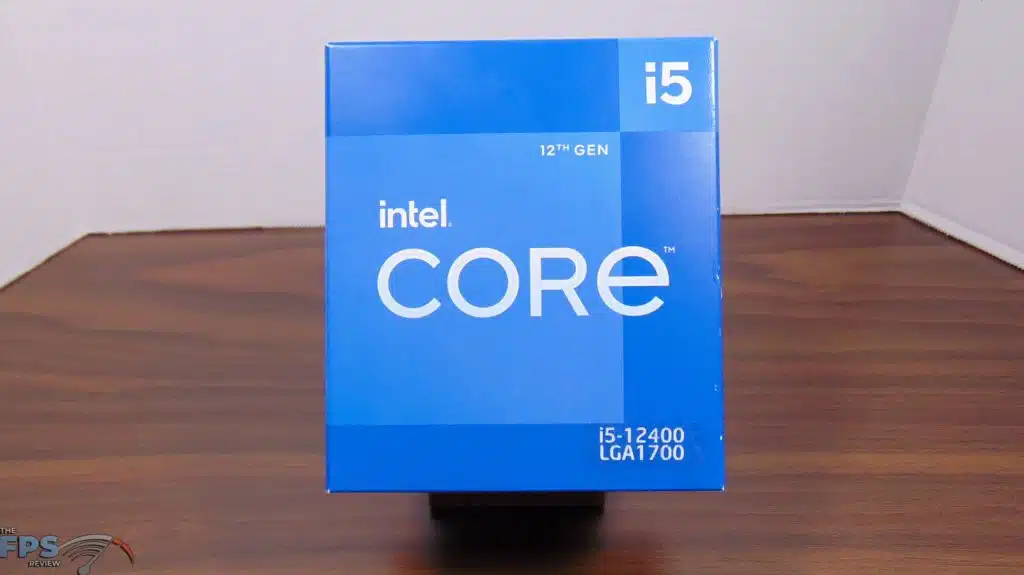
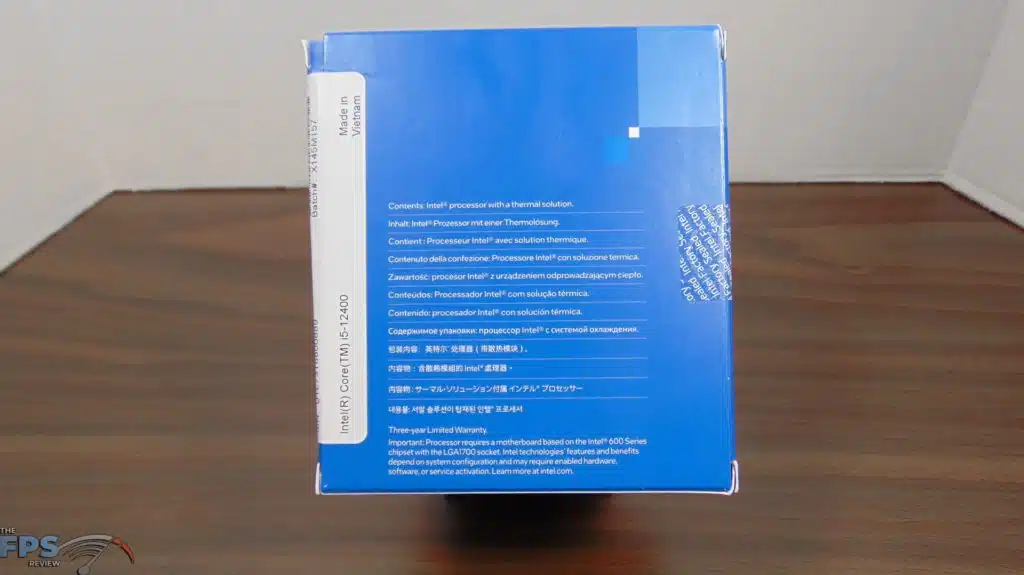

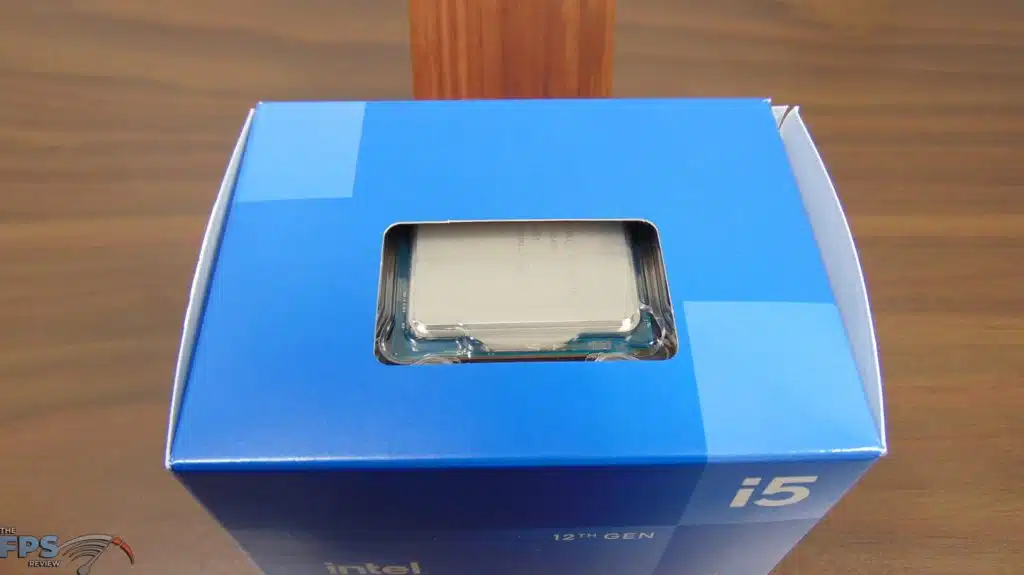
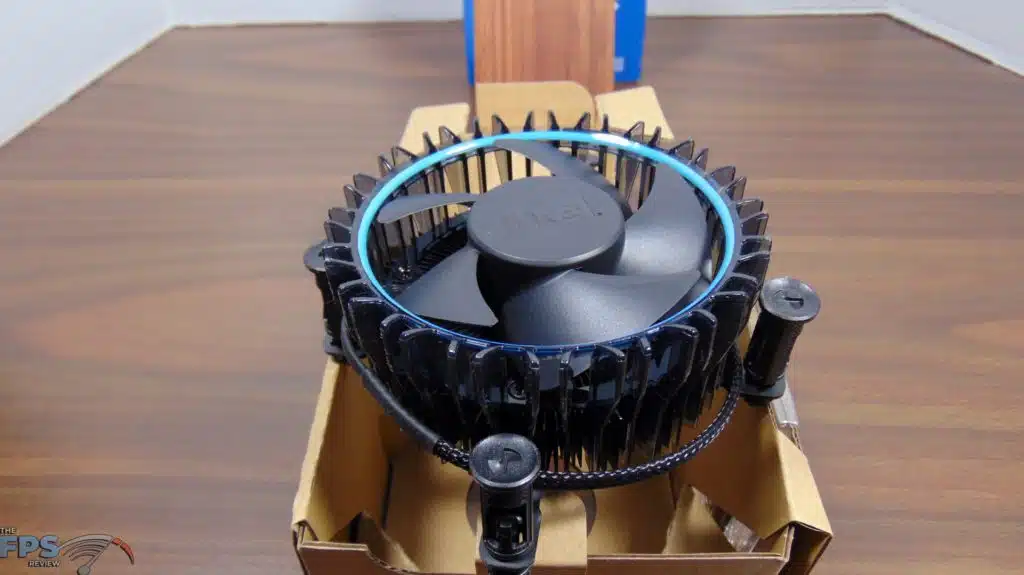

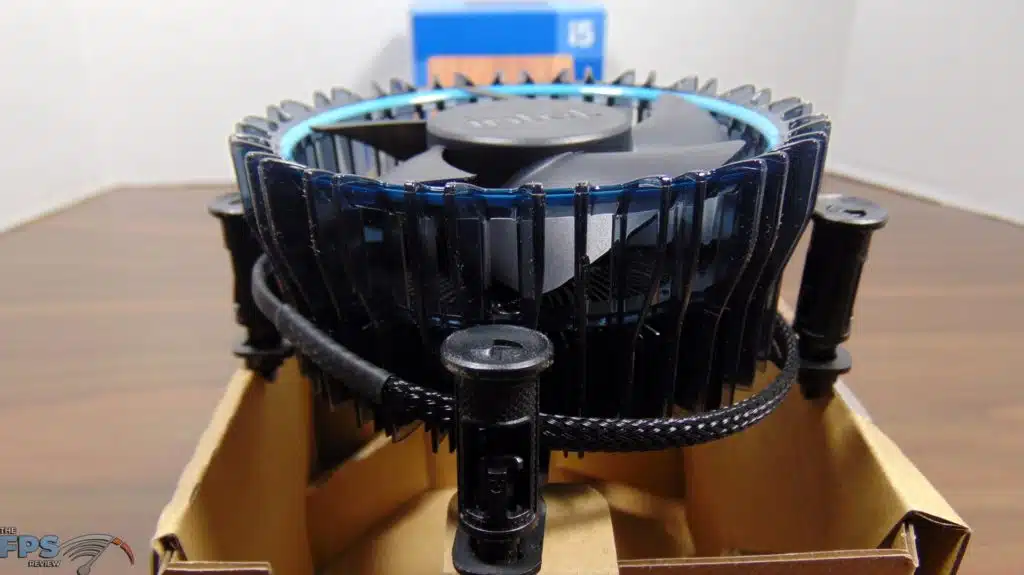


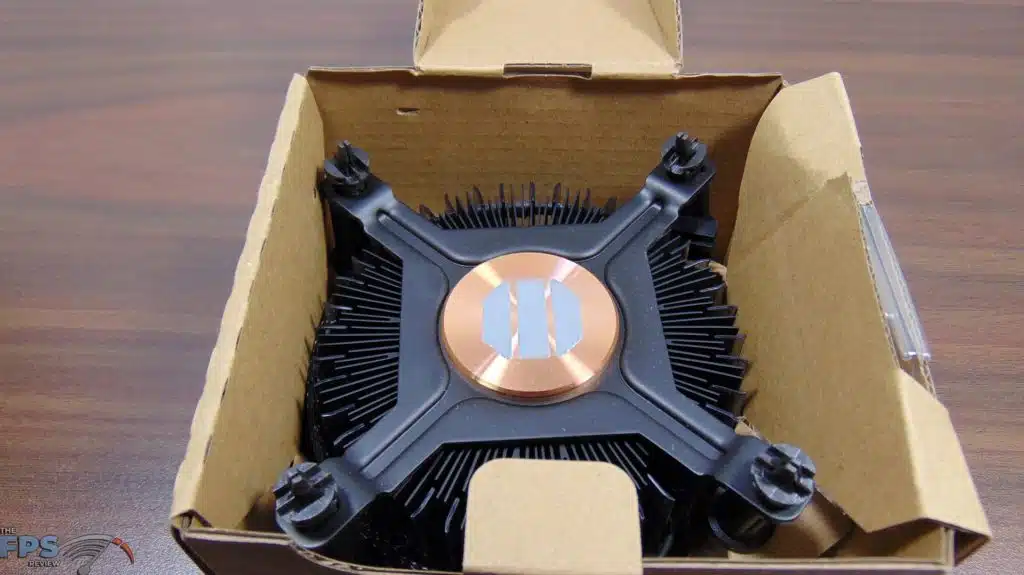

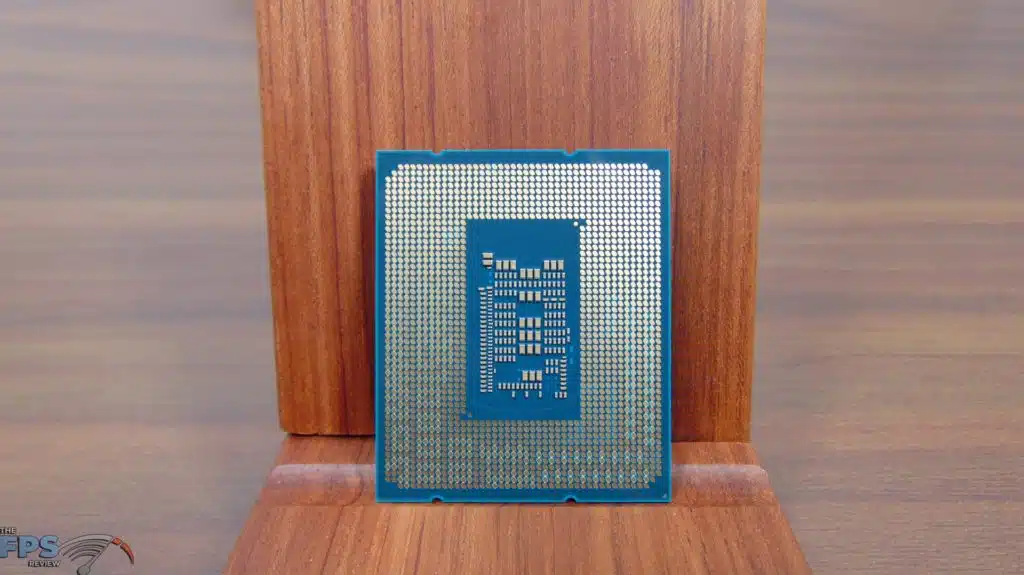
We purchased a boxed retail version of the Intel Core i5-12400 CPU. This one is heavier because the Intel Core i5-12400 actually ships with an Intel Thermal Solution, that’s right, an air-cooler is included with this CPU so that can be a big dollar savings right there that you don’t have to purchase. On the side of our box, you can see that this is an i5-12400 S-Spec SRL5Y CPU with an 18MB Cache for LGA1700. The CPU is visible from the top.
Intel has included its air-cooled thermal solution which is a radial fan and shroud atop an aluminum block. The fins on the shroud are plastic, but the aluminum base has its own aluminum fins for heat dissipation. It does use a copper base for better heat dissipation and includes thermal paste. The mounting is pre-installed and is Intel’s standard push-pin installation for the LGA1700 design pattern. It does appear Intel is using a PWM-powered fan.
The Intel Core i5-12400 looks identical to other Alder Lake CPUs, we really notice no difference in appearance.


